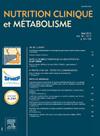Prevalence of vitamin D deficiency in apparently healthy Indian children and adolescents: A systematic review and meta-analysis
IF 0.4
4区 医学
Q4 ENDOCRINOLOGY & METABOLISM
引用次数: 0
Abstract
Background
Vitamin D is essential for bone health, calcium metabolism, and immune function. Despite ample sunlight, vitamin D deficiency is common among Indian children and adolescents due to limited sun exposure and poor dietary intake. This review measured the pooled prevalence of vitamin D deficiency and serum vitamin D levels in apparently healthy Indian children and adolescents (≤ 18 years).
Methods
A literature search was done in PubMed, Embase, Scopus, and Google Scholar for studies published up to September 2024. Eligible studies reported serum vitamin D levels and/or the prevalence of vitamin D deficiency in apparently healthy Indian children and adolescents. Study quality was assessed using the Joanna Briggs Institute (JBI) checklist. Data analysis was done by RStudio using a random-effects model to estimate the pooled prevalence of vitamin D deficiency and mean serum vitamin D levels.
Results
A total of 23 cross-sectional studies with 38,762 participants were included. The pooled prevalence of vitamin D deficiency (< 20 ng/ml) was 66.4% (95% CI: 59.0; 73.2). The pooled mean serum vitamin D level was 18.57 ng/ml (95% CI: 15.46; 21.68). The highest prevalence was observed in Northern India (84.1%). Females (72.0%) had a higher deficiency rate than males (63.9%). Studies with larger sample sizes (> 400 participants) reported a prevalence of 77.7%, whereas studies with smaller sample sizes (≤ 400 participants) showed 53.8%.
Conclusion
Vitamin D deficiency is a major public health concern among Indian children and adolescents. Urgent interventions, such as food fortification, awareness campaigns, and supplementation programs, are needed to mitigate this issue.
明显健康的印度儿童和青少年维生素D缺乏症的患病率:系统回顾和荟萃分析
维生素D对骨骼健康、钙代谢和免疫功能至关重要。尽管阳光充足,但由于日照不足和饮食摄入不良,维生素D缺乏症在印度儿童和青少年中很常见。本综述测量了表面健康的印度儿童和青少年(≤18岁)维生素D缺乏症和血清维生素D水平的综合流行率。方法在PubMed、Embase、Scopus和b谷歌Scholar中检索截至2024年9月发表的研究。符合条件的研究报告了明显健康的印度儿童和青少年血清维生素D水平和/或维生素D缺乏症的患病率。采用乔安娜布里格斯研究所(JBI)检查表评估研究质量。RStudio使用随机效应模型进行数据分析,以估计维生素D缺乏症的总患病率和平均血清维生素D水平。结果共纳入23项横断面研究,38,762名受试者。维生素D缺乏症(20 ng/ml)的总患病率为66.4% (95% CI: 59.0; 73.2)。合并后的平均血清维生素D水平为18.57 ng/ml (95% CI: 15.46; 21.68)。发病率最高的是印度北部(84.1%)。女性(72.0%)缺乏率高于男性(63.9%)。样本量较大(400人)的研究报告患病率为77.7%,而样本量较小(≤400人)的研究报告患病率为53.8%。结论维生素D缺乏症是印度儿童和青少年的主要公共卫生问题。需要采取紧急干预措施,如食品强化、提高认识运动和补充计划,以缓解这一问题。
本文章由计算机程序翻译,如有差异,请以英文原文为准。
求助全文
约1分钟内获得全文
求助全文
来源期刊

Nutrition Clinique et Metabolisme
医学-内分泌学与代谢
CiteScore
0.80
自引率
16.70%
发文量
216
审稿时长
78 days
期刊介绍:
Nutrition Clinique et Métabolisme is the journal of the French-speaking Society of Enteral and Parenteral Nutrition. Associating clinicians, biologists, pharmacists, and fundamentalists, the articles presented in the journal concern man and animals, and deal with organs and cells. The goal is a better understanding of the effects of artificial nutrition and human metabolism. Original articles, general reviews, update articles, technical notes and communications are published, as well as editorials and case reports.
 求助内容:
求助内容: 应助结果提醒方式:
应助结果提醒方式:


